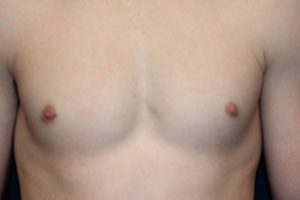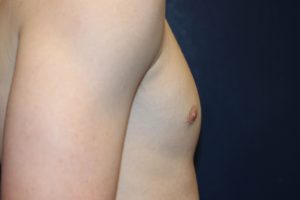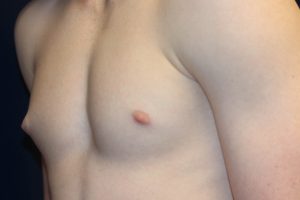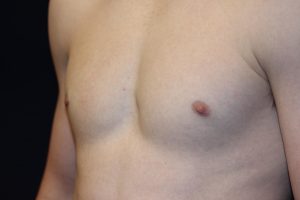Gynecomastia is very common, being present from the teenage years up to the senior years. Though it can be more emotionally bothersome for those who are younger, I’ve treated many men in their 50’s, 60’s and even 70’s who were quite embarrassed by their man boobs though the sizes that bothered them were generally much larger than what it took to an issue for those in their teens, 20’s and 30’s.
Even a small enlargement, often imperceptible to the average bystander, can be emotionally problematic for younger men. It can lead to avoidance of physical activities including sports, a reduction in social contacts, anxiety, depression, eating disorders and more. Many will wear layered clothes, even in 110 degree weather, just to hide their embarrassing secret.
Typically the smaller, more localized enlargements occur in younger men and may be residuals from puberty or as a result of taking supplements including testosterone and other steroids. The gynecomastia consists of glandular tissue that needs to be removed by direct resection (cutting it out). Liposuction is not only unnecessary but it will also not treat the problem.
It takes only a small amount of enlargement to be bothersome. I have treated numerous men who had 15 grams (a tablespoon) or less of glandular tissue removed in the treatment of their gynecomastia and they were ecstatic with their results. Even the removal of small amounts can be quite noticeable.
The following 18 year old patient of mine had stable, persistent gynecomastia only of the right breast which really bothered him (photos A, C and E). He was so embarrassed by it that he avoided a variety of sports, wouldn’t go in the pool and wore layers of shirts even in blistering hot weather.

A. Gynecomastia right breast

B. After direct excision of glandular tissue

C. Before

D. After

E. Before

F. After
My examination revealed this to be glandular tissue only and I recommended direct excision of it without any liposuction. He underwent surgery and had 15 grams (one tablespoon) of glandular tissue removed from the right breast. There was virtually no discomfort and, therefore, no need to take pain medication. His outcome at only two and a half months is quite evident (photos B, D and F).
He was extremely happy with the results and, in fact, returned to the activities that he previously avoided because of his gynecomastia.
If you would like more information on gynecomastia and its treatment or for any other plastic surgery procedure that I perform, you can call my office at 480-451-3000.
Steven H. Turkeltaub, M.D. P.C.
Scottsdale and Phoenix, Arizona
